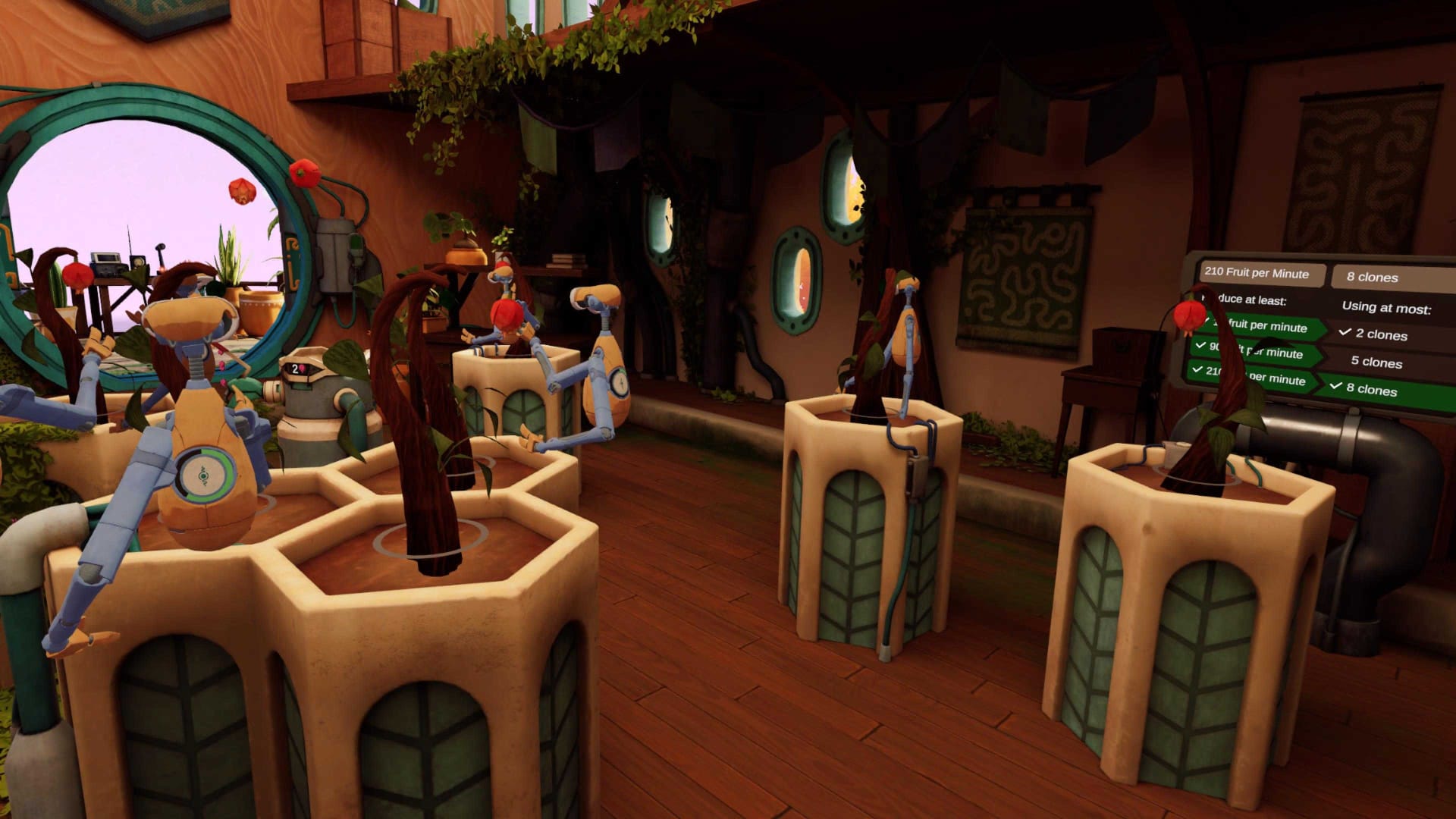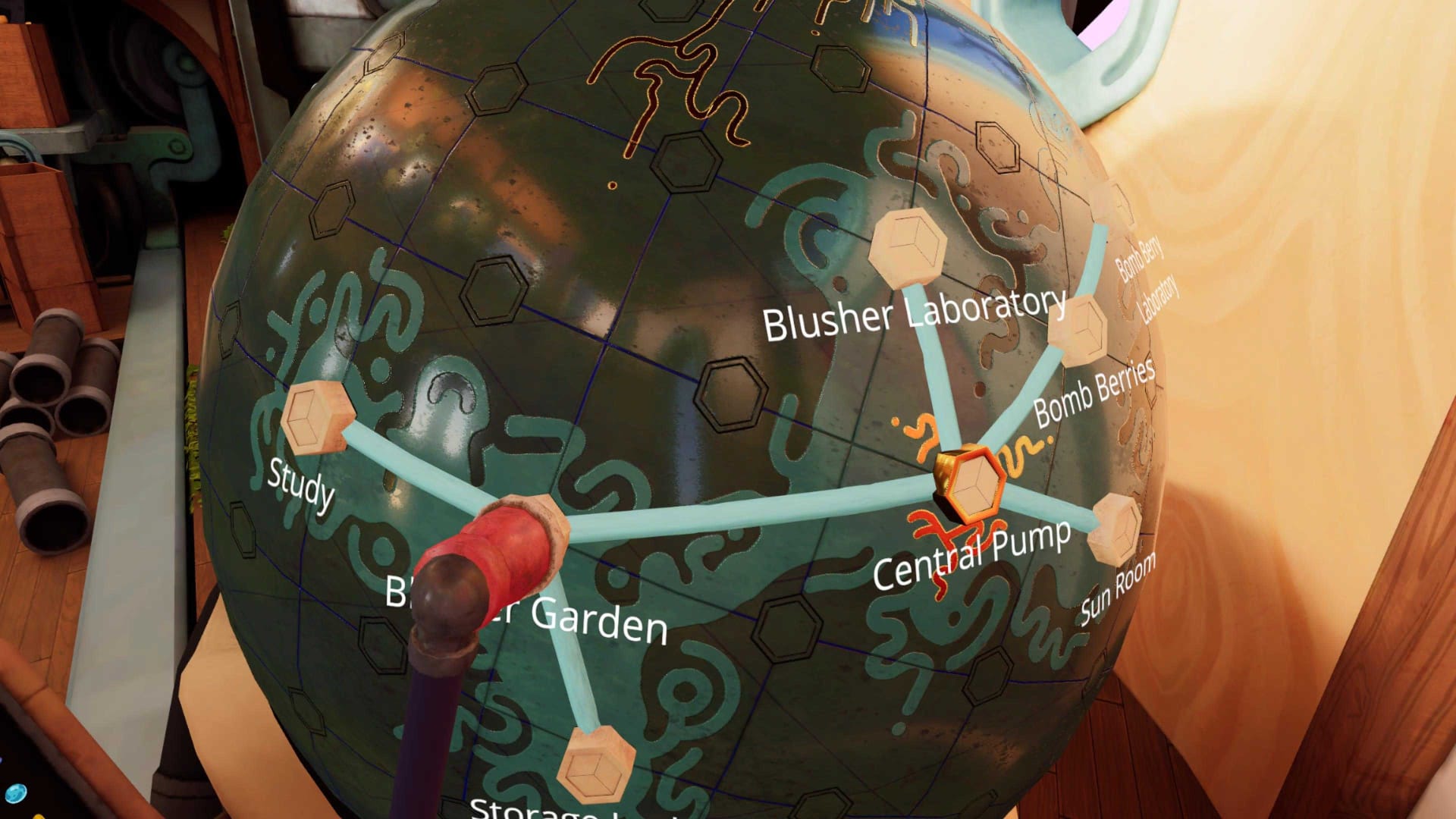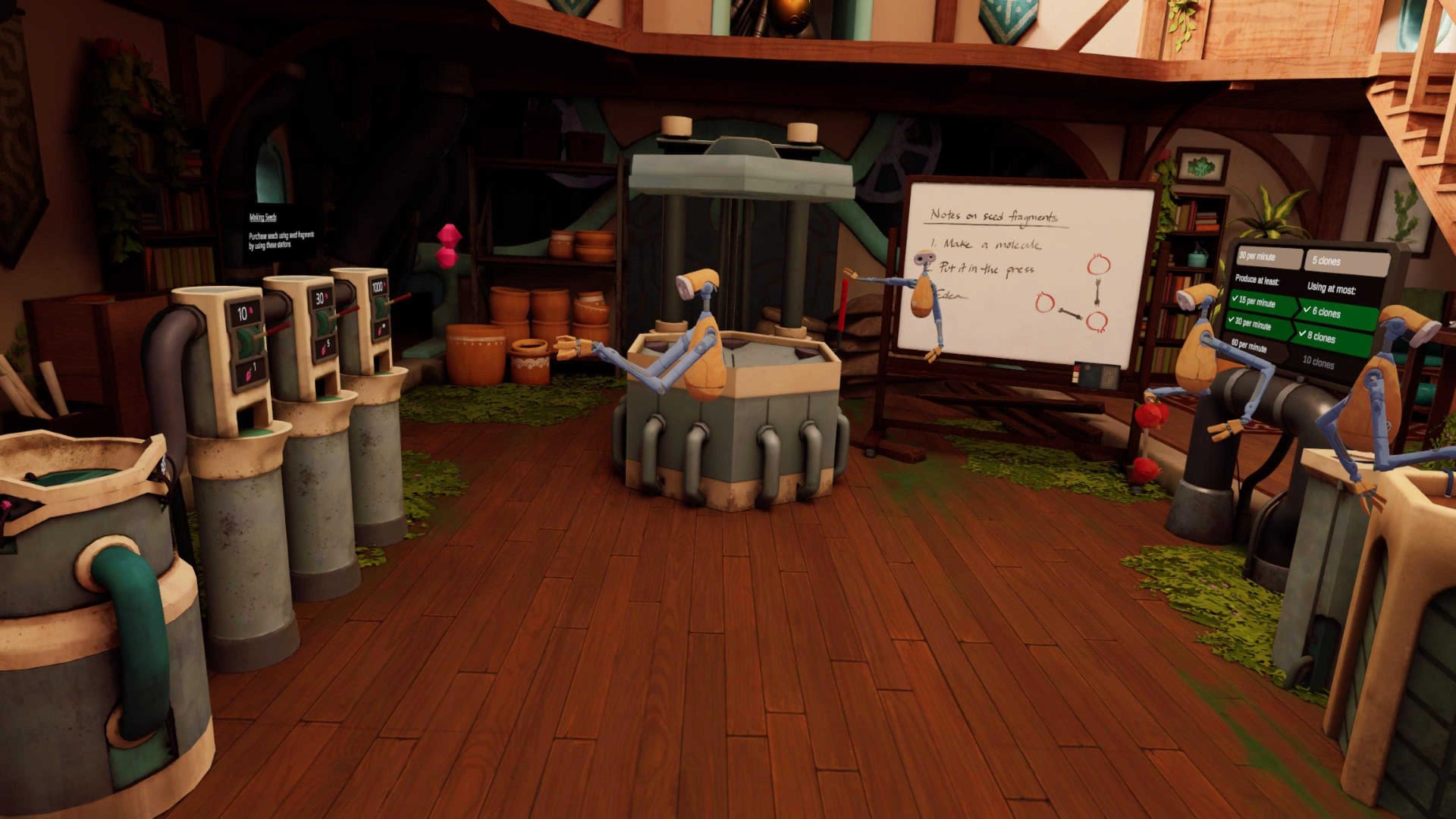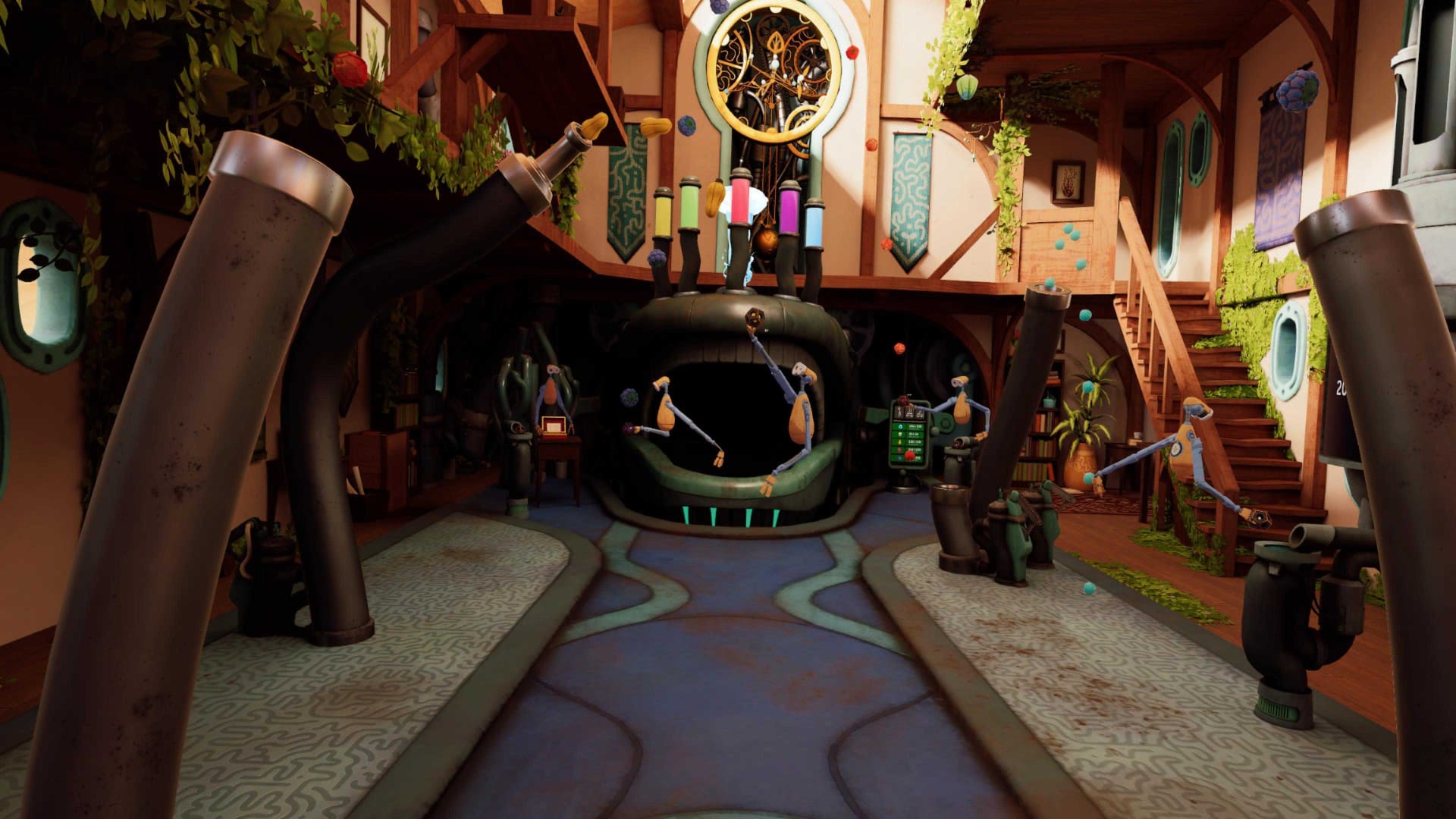Few games are able to evoke powerful senses of wonder and pure joy, and those that do are often considered some of the best of all time. The last game I remember being just pure delight for its entirety was Super Mario Odyssey. With its deceptively simple design, The Last Clockwinder was able to also achieve those lofty heights.
You play as Jules who is sent on a mission to repair an ancient clocktower housed in a massive tree. Each level will have one or two audio tapes that are recordings of a young Jules and the last person in charge of the clocktower, discussing how things work in the tower or just day to day life. From time to time a friend from elsewhere checks in on the radio as well. You’ll learn why Jules left the tower, why she has returned, and what’s so important about it anyway. It’s a light and simple narrative that doesn’t get in the way of anything.
To be honest with you, I couldn’t really tell you what’s so important about the clocktower or why it must be repaired, but the goal is to repair broken machines that are powered by various fruits. Along the way, you’ll create seeds to plant those fruits and harvest them for fuel in the future.

The earliest and most simple puzzles are simply: take this fruit and get it in the chute. It has to be automated, otherwise, you’d be standing there for hours throwing fruit into the same hoop over and over. You’ll need to start producing things at a pretty quick rate.
Creating this automated conveyor belt is done through automatons that mimic your movements perfectly. You can set them on intervals of one, two, and four second loops, where they will copy your exact movements in the spot you’re standing, essentially becoming a clone of your last few seconds. If you pick up a fruit and make it into the chute, that automaton will do that exact throw every time — and make it every time.
More or less, that’s the game. It sounds incredibly simple written down, which it is, but The Last Clockwinder brilliantly layers some more mechanics on top of that basic loop. Once things get a little more complex, having everything come together is one of the most satisfying, grin-producing moments I’ve ever had in a game.

That easy-to-understand design philosophy carries throughout the game as the complexity is ramped up, as well. In all, there are five different fruits, each of which has their own challenges. One can only be held for a short time before it explodes, and another can’t be touched at all or it disappears.
All of the pieces come together in the levels you need to create seeds so you can have more plants for future puzzles. For each, you must make a “molecule” of fruits connected to one another that then gets pressed into seeds. It’s like building something with marshmallows and toothpicks if you ever did that as a kid.
In these moments, you have to create an assembly line of automatons, each completing one or two steps before passing the project on to another. In one loop, you may pick a fruit, stick it with one of the connecting rods, then throw that creation to then be caught by another automaton, who then adds another fruit, connecting rod, and so on. Of course, the trick is you’ll have to do all these moves yourself, including throwing and catching what you need. You’ll likely find yourself doing the same motions over and over until you get it just right.
Once you finally figure out a puzzle, there’s no better moment than sitting back and admiring your creation. That could mean 8, or more, of these automatons all throwing, catching, building, and smashing things together in a beautiful scene of controlled chaos.

Every new mechanic builds upon what you know from before, culminating in a wonderful symphony of creativity in the end. What happens when you connect a fruit that floats away with one that doesn’t? How do you handle a fruit that disappears the second you touch it?
One mechanic exemplifies this beautiful simplicity perfectly. About midway through the game, some puzzles feature a knife, as some fruit can only be picked after being cut from the vine first.
So, for one likely step, you need to pick up the knife, cut the fruit, grab it, then pass that off. Seems simple enough, but what about the knife? The automaton doesn’t come wielding the knife, they need to pick it up. That means you have to make sure, as part of your loop, to put the knife back in the exact spot you picked it up, so the automaton will pick it back up for the loop.
Now, what do you do with only one knife but need to cut multiple fruits in one set of steps that aren’t next to each other, and you may have a few steps in between needing the knife again? How do you make sure the knife gets to where it needs to be if it also needs to be returned to a starting position first? Oh, and remember the longest loop for any one automaton is four seconds.

Because this is a VR game, every act is heightened by the simple fact that your one-to-one movements are behind your success. There is not a preexisting machine or button that does something for me. At some point, I stood in that exact spot and made that precise movement to make it all work.
Compound the wonderful use of VR with the fact that each step along the chain of automation is in itself a puzzle and then a challenge to execute what is necessary, and you have constant moments of triumph powered by your direct involvement. Catching fruit, cutting it, attaching it to another, then chucking it across the room in the generally correct location to be caught for the next step makes you want to almost jump for joy each time you get it just right.
Gaming’s best moments let us be the hero, whether that is pulling off some electrifying combat move or finally reasoning our way through a puzzle. Those explosions of sudden realization when you’ve finally figured something out and the joy of success after a bunch of trial and error occur at just about every moment in The Last Clockwinder.
As a puzzle game, The Last Clockwinder is not too difficult to figure out if you just want to reach the basic bar of success for each level and move on. You definitely have the opportunity to engage with the mechanics further for some added complexity, however. That usually comes in the form of creating something on a bigger scale and/or more efficient.
Each level has a board that sets out some challenges for producing a fruit, seed, or what have you at a certain rate with a limited number of the automatons. Do you need to do those to complete the game? No, but they are excellent ways to challenge yourself more and engage further with the deceptively deep mechanics.
The Last Clockwinder Review | Verdict
The Last Clockwinder is an absolute must-play for anyone that owns VR. It is delightful from beginning to finish and had me grinning the entire time. The simple design is a perfect example of making a relative few mechanics absolutely shine, rewarding creative solutions. It’s a brilliant example of the power VR can bring to a game.
TechRaptor reviewed The Last Clockwinder on PlayStation VR 2 using a copy provided by the publisher. It is also available on Meta Quest 2 and Steam.
The Last Clockwinder Review
Source: Pinay Guide Blog
Walang komento:
Mag-post ng isang Komento